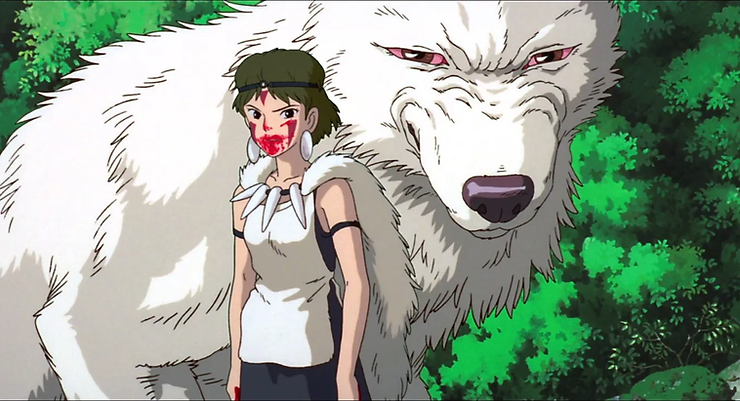By: Sophia Wang
On October 29, 1999, the Japanese animation film Princess Mononoke was released in the US, three years after its release in Japan.
The film takes place in the 14th century, when the harmony that humans, animals and gods have enjoyed begins to fall apart. The protagonist, Ashitaka, was stricken by a curse while defending his village, and seeks a cure from the deer-like god Shishigami. While he travels, he sees humans ravaging the earth, bringing down the wrath of wolf god Moro and his human companion Princess Mononoke. He tries to help make peace, but only brings conflict.
The movie was originally intended for elementary school students. However, in the US, it is rated PG-13 for the gore and violent scenes. According to a site for parents that advises whether or not the movie is appropriate, Princess Mononoke contains an excessive amount of gore and should be rated R for intense sequences of action violence, some gore, and frightening images.
In a 1997 interview with the magazine Cine Front, Miyazaki states that Princess Mononoke’s depiction of the struggle between man and nature is “what I want elementary school children to see. Kindergarteners may cry at the brutal scenes. Since those scenes deal with problems of life and death, I really wanted to depict them so they could be understood just as they are.”
At the film’s press conference at Berlin International Film Festival in 1998, Hayao Miyazaki, a Japanese film director, said he originally intended Mononoke for teenagers, but that as production progressed, “I lost sight of whom I intended as my audience. People of differing ages came to see the film.”
“The issue that we confront as human beings is how to control that impulse. I know that small children may watch this film, but I intentionally chose not to shield them from the violence that resides in human beings.” said Miyazaki.
Critics call the film too violent. One Berlin reporter had claimed that the film was too violent for young children (as young as 5), but Miyazaki responded by saying that, “I am fully aware of that opinion. But children most certainly have violence within them. Unless we touch upon that, I don’t think the film can be convincing to children.”
Unlike the not so warm reception of the movie in the US, it was sensational in Japan. The revenue generated from the movie’s ticket sales was over 19 billion yen ($160 million). The themes of unrest portrayed by Princess Mononoke were enthralling to the Japanese people and contributed to the popularity of the movie. (The advertising probably also helped.)
This movie is incredibly relevant today. Neil Gaiman says, “”We went through years of people going ‘this climate stuff is going to be a huge problem’. And now suddenly we’re starting to see the results and it’s like, ‘OK, we really are out of whack here and it’s only going to get worse’. And now what do we do? How do we survive?” Princess Mononoke emphasizes the resilience of humans and the world around them.
Link:











